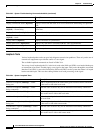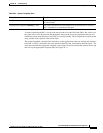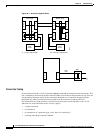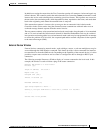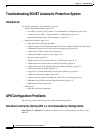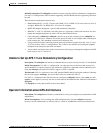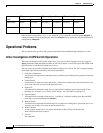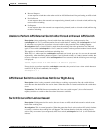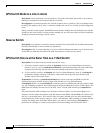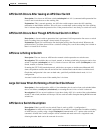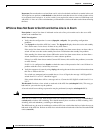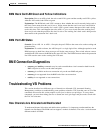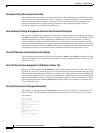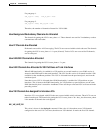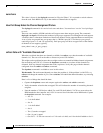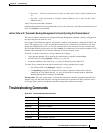
28-14
Cisco BPX 8600 Series Installation and Configuration
Release 9.3.10, Part Number 78-11603-01 Rev. D0, July 2001
Chapter28 Troubleshooting
Operational Problems
APS Switch Made to a Line in Alarm
Description: After performing a forced switch to a line with a line alarm, the switch is successful in
making an alarmed line active with possible loss of traffic.
Investigation: It is normal operation for a forced switch to cause a switch to a line even though it may
be faulty. This enables you to “force” a switch to standby line even if it is in alarm. A traffic outage may
occur.
During a manual switch request, the BXM firmware decides whether the switch should occur and the
switch may not occur if there is an alarm on the standby line. An APS clear switch will allow automatic
switching to resume following a forced switch.
Reverse Switch
Description: User performs a forced or manual switch on local end of APS line in bidirectional mode,
but other end indicates a reverse switch was performed.
Investigation: This is normal operation. A reverse switch in bidirectional mode occurs on the far end
of the APS line when the local end of the APS line performs a switch for any reason.
APS Switch Occurs at the Same Time as a Y-Red Switch
Description: Two related scenarios could cause this to occur.
1. Aforcedormanualswitchisineffect.Indspapsln, the Last User Switch Request is forced or
manual w->p or p->w. If a switchcdred/switchyred isperformed(couldbecausedbycardfailure
or physically removing card also) the front card switches and an APS switch occurs.
2. A clear switch is in effect. In dspapsln, the Last User Switch Request is clear. If a switchyred is
performed (could be caused by card failure or physically removing card also) the front card
switches and an APS switch occurs.
Explanation: Following a switchcdred/switchyred, or active card reset, the BXM card will be
instructed to perform an APS switch to align itself with the Last User Switch Request
(switchapsln).When a Y-red (switchcdred) switch takes place on a BXM card pair being used for APS
1+1, the card being switched is sent configuration messages including the last user switch request. The
BXM card will initially become active in an APS “clear” switch, mode following a switchcdred or
reset.
This means that the APS switching is on automatic. However if the Last User Switch Request is a
manual or forced switch, the software sends this request to the BXM, and the BXM will switch to this
line if it is not already active. This switch is done to comply with the users last APS switch request.
In the second case, if the last user request is “clear,” full automatic APS switching is in effect with the
working line being active by default. When there is no last user switch request (switchapsln to
protection, for example) to switch to any particular line, the working line will become active.



